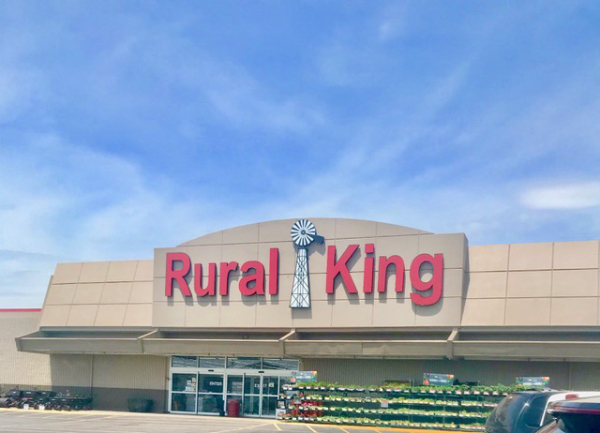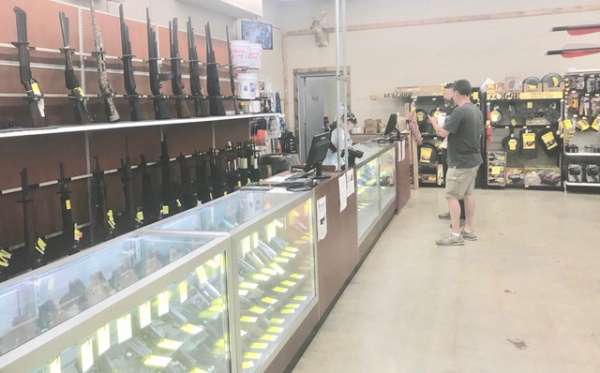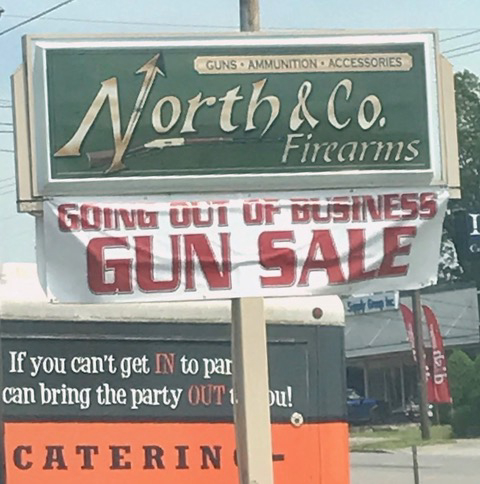During a visit to Morristown, Tennessee, last week I saw yet another example of how good news and bad news can be the same news, depending on how the news impacts you.
For the last couple of years we lived there, the massive retail space and attendant parking areas that formerly housed the local K-Mart superstore had sat dormant. In fact, I used the parking lot to teach one of my daughters how to drive a standard-shift transmission.
This time, to my surprise, the location was anything but quiet. In fact, it was one of the busier retail locations I saw.


Rural King, the Illinois company that bills itself as “America’s Farm and Home Store” had moved into the old K-Mart, and appeared to be doing quite well for itself.
Since I’d never heard of the company, had some time to kill, and am always curious about retail, I decided to give it a look.
It carried a lot of a wide mix of products, from $9 jeans to $35,000 (and up) tractors. As I wandered through livestock feed, farm equipment, agricultural parts and pieces, lawnmowers and trimmers and housewares, I actually started filling a buggy with pet items and wood pellets for my pellet smoker grill. In each instance, they were offered at prices below what I was accustomed to paying at Lowe’s, Home Depot or my local PetSmart.
All that before I got to the department proudly displayed on the front of their store- a gun department.
Actually, “outdoor” department might have been a more accurate description, because it offered everything from archery equipment to hunting clothes- and the promised guns. And it was a variety of guns, from Taurus’ G2c models (with a $30 “Cash and Carry” rebate) to FN FNS-9 Compacts, Ruger, Kimber, Smith & Wesson M&Ps and Walther models.
And the store had multiple units on hand offering a consumer choices in semi auto pistols that ranged from $209 .380s and 9mms to a $1,049 Sig Sauer 1911 Emperor Scorpion.
The long gun selection was also pretty comprehensive, with lever actions, semi autos and bolt guns running the length of the extensive handgun counter. An optics case included Bushnell, Leupold, Sig Sauer , Simmons, Vortex, and other lower-cost alternative brands.
All this was complemented with shelves of ammunition, targets, eye and ear protection, and factory and aftermarket magazines. Those flowed into the hunting and archery sections.
It was the equivalent of a small, but comprehensively stocked, gun store inside a big retail location. Nothing resembling Sig’s plush “store in a store,” but more than enough to make me wonder if it wouldn’t impact the other retailers in the area. So I decided to check out with my “deals” and do a little comparison shopping.

This sign tells the story of another local gun shop that found itself unable to compete with a large retailer's volume and pricing.
|
Instead, I found myself driving by the retail location where I would previously have stopped. Where I’d expected to see customer’s cars in the parking lot, I spotted the owner and some helpers loading displays into a truck. Another store I considered an “ambitious mix of selection and service” had failed.
It’s a scenario that I’ve seen repeatedly across the country. Small retailers simply can’t get the products -or pricing -that allow them to compete with large retailers.
It’s tough enough when your competition has an extensive selection of products. But a competitor with access to an extensive selection of products via the corporate office, offers $12.99 flat rate shipping on guns and no transfer fee when you buy at their local store, there’s simply no way to compete.
If you’re a consumer, you win. If you’re a retailer hoping knowledge and personal service can overcome selection and price, you lose.
It’s enough to make you wonder why - and how -there are any independent retailers left in the industry. From completely unscientific research including anecdotal information gathered from my opportunities to talk with small retailers from all over the country, it seems there are only a few ways to survive.
Those include taking on the “risky” areas corporations avoid due to social pressure or risk factors. Ranges, instruction beyond the nominal classes for concealed carry permits, and using the range facilities to create shooting competitions are frequently cited ways to overcome price disadvantages.
Another area frequently avoided by big retailers - used guns- has been the salvation for other small dealers. It’s an area that’s fraught with risk if you don’t have enough basic knowledge of gunsmithing to determine the difference between a “good used gun” and a “well-used one”- but more than one retailer’s told me the willingness to accept trades is the single biggest advantage they have.
With NICS checks continuing to trend downward, it’s obvious that retailers- no matter what their size- are all looking for ways to get customers through their doors. Hopefully, they’ll resist the temptation to “race for the basement” by cutting prices - and margins- to the bone.
Consumers win in short-term pricing situations. No one wins in protracted price slashing.
—Jim Shepherd